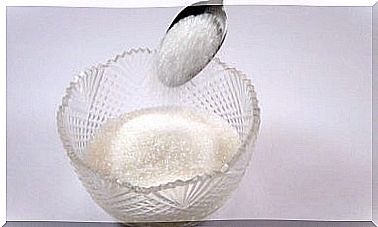Nervous Tics: Why Do They Appear? How To Treat Them?
Although there are different techniques that can help us reduce nervous tics, in the case of children it is convenient to first analyze the origin to treat it at its roots.

Nerve tics are involuntary movements of the muscles. They are inopportune, convulsive and excessive. They can appear at any time and with different frequency.
In other words, repetitive movements in a certain part of the body, and without having any notion of them, are considered nervous tics. They usually appear from 8 years of age and can be maintained into adulthood.
What is there to know about nervous tics?
In many cases of severe tics, patients isolate themselves from others out of embarrassment. In addition, involuntary contractions and abnormal postures can sometimes cause muscle aches and other discomfort.

However, there are two types of nervous tics: etiology (generated involuntarily) and neurophysiology (due to deficiencies in the nervous system or damage to the brain). The former are the most common and involve a limited number of muscles.
The most common nervous tics are:
- Touch your nose.
- Snap your fingers.
- Grinding your teeth
- Lip biting.
- Shrug.
- Blink quickly.
- Move your head to the sides.
Nervous tics and stress
Tics can be caused by different triggers, although in many cases they are a manifestation of stress, anxiety or a phobia.
There are people more prone to its development and the appearance intensifies at certain times when the nerves can play tricks on us : exams, a wedding, a trip, a move, etc.
On the contrary, these manifestations improve when the person is calm or the stressful situation has passed. Other causes of nervous tics can be:
- Excessive tension.
- Insecurity and fears.
- Feelings of guilt.
- Obsessive compulsive character.
- Intake of certain medications.
- Suppression of feelings or emotions.
What to do when children suffer from nervous tics?
This disorder usually appears at an early age and is more common in boys than girls, especially if they are introverted, shy or overprotected by their parents. In these cases, the little ones cannot anticipate their appearance, much less control them. Even trying to change the habit can lead to more stress and distress.

Nerve tics in children can be caused by three factors: neurobiological, genetic or environmental (the latter being the most common).
Although in most cases the “symptoms” are temporary, it is essential to help your children. Here we share some guidelines.
1. Don’t try to change behavior
It is necessary to remember that nervous tics are not voluntary and, therefore, forcing them to control them has the opposite consequence: more movements and muscle contractions.
2. Do not punish
What we must do is the opposite: ignore or minimize the problem so that the child does not feel diminished and can stop paying attention when interacting with other people.
3. Avoid stressful situations
Since the tic disorder has probably arisen from a trauma or an adverse situation, it is very important not to expose it to similar moments. At that age, any inconvenience at school, at home or in the park can cause symptoms of this type.
4. Analyze the tic
At what particular moment or situation does the child move his arm, blink, or chatter his teeth? By observing the onset of the tic, we can help you eliminate that action. For example, it may be distracting or entertaining.
5. Make you feel good and useful
Choosing certain responsibilities to carry out at home can help children with nervous tics. For example, have them tidy up their room, take out the trash, or put the dishes on the table together. In this way, we will be promoting their self-esteem and preventing them from feeling insecure or diminished.
How to reduce nervous tics?
Since the appearance of these movements is related to stress and anxiety, we could use relaxation techniques to reduce them. Among the most effective we find:
1. Yoga
It serves to balance the emotions and let the feelings flow. In addition, yoga contributes to a relaxed atmosphere and self-knowledge. With a few minutes a day and certain postures, nervous tics can be gradually reduced.
2. Meditation
Another of the practices that gives us serenity and well-being. Sitting in the lotus position with your eyes closed and focusing on your breath balances your heartbeat and calms you down. You can do it before going to bed or when you wake up.
3. Massages
The massage sessions practiced by a professional serve to relax the muscles and especially to reduce the possible pain or discomfort caused by the nervous tic. Once a week may be sufficient.
4. Therapy
Psychology can help us from an emotional point of view, since it allows us to reveal certain hidden issues within us. For example, if we have suffered a trauma or feel inferior to others, perhaps the consequence is an involuntary movement in the muscles.
5. Food

Although it is not a technique in itself, the truth is that certain foods can increase the appearance or intensity of nervous tics. For example, you should reduce the consumption of coffee, alcoholic beverages and soft drinks. On the contrary, we recommend that you eat those foods that are beneficial for the nervous system such as:
- Walnuts.
- Fish.
- Almonds
- Chamomile infusions.
6. Exercise
Doing physical activity can help you release tension and put stress aside. So it can be helpful if you have a nervous tic. Choose the discipline that you like the most and do not hesitate to exercise at least 3 times a week.
Don’t leave it alone
It is important that the child feels accompanied, valued and loved so that he can leave his problem behind.








